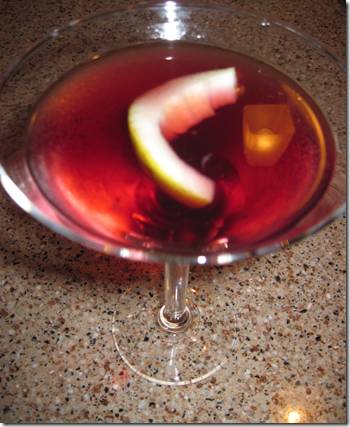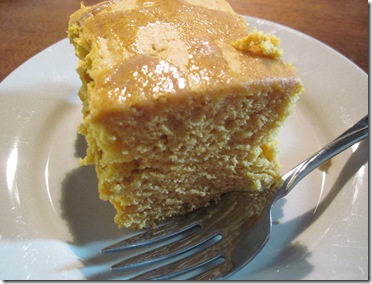Last time, we looked at where cheese comes from and looked at a few soft cheeses. I thought we did a pretty decent job of reviewing the cheeses, but my Uncle Alan is a big fan of Brie de Meaux – which I panned. As he put it, “Grasshopper, you have learned much about the grape, however your understanding of the mysteries of God's other great gift is f’d up.”
He may be right, and he’s got free rein to put together his brie recommendations in this space. (Seriously.) Still, it takes different strokes to move the world, yes it does, and as I’ve always said, let your palate be your guide.
This time around, we’ll look at some hard cheeses. As we discussed last time, the basic process of cheesemaking is to allow milk to sour and curdle, allowing the solids to settle out into curds, leaving the liquid whey behind. The curds are then pressed into balls, blocks, or logs; the whey is drained off; and you’ve got cheese.
A cheesemaker will sometimes add a complex of enzymes called rennet to the curdling milk. Rennet can be found in the stomach of any mammal. It greatly speeds up the coagulation of the solids in milk, allowing the body to begin working on digesting the proteins and fats. The rennet added to cheese is normally harvested from the stomachs of kid goats or cow calves.
When rennet is added to a batch of curds and whey, the curds form more quickly and more tightly. The whey is then drained away and the curds are put into molds for pressing to extract more water. When the water is gone, the bacteria still in the cheese actually act as a preservative, allowing aging. As a cheese ages, the flavors gain complexity.
We looked at a range of cheeses from semi-firm to hard. Again, we tried to pair with wines that were suggested as “classic pairings.” For this tasting, the Sweet Partner in Crime and I invited our friend, The Hanging Chad, to assist us with our tastings. Our cheese board:
- Mild cheddar (pairing: oaky California Chardonnay)
- Sharp cheddar (pairing: young California Cabernet Sauvignon)
- Gruyère (pairing: French extra dry sparkling wine)
- Parmesan (pairing: Super Tuscan – blend of sangiovese and merlot)
Let’s get it started:
Cheddars: Not to be confused with the TGIFridays-esque restaurant chain – cheddar is one of the more ubitquitous cheeses. It was originally made in England in the town of…wait for it…Cheddar. Cheddar Cheese differs from many other forms of cheese because of the “cheddaring” process, in which the curd is kneaded with salt and then sliced into large blocks, which are left to age anywhere from a few weeks to a few years.
In general, the longer the aging, the sharper the Cheddar. Mild cheddar is usually only aged for a couple of months, while sharp cheddar can be aged for over a decade.
Do not confuse actual cheddar cheese with various “cheese foods” like Easy Cheese (“Fromage Facile” if you want to be hoity toity) labeled with the name. Cheddar cheese has a somewhat pungent flavor which gets amplified as the cheese ages. Cheddar cheese is normally either white or very pale yellow. Those bright yellow cheeses you see all have additives – usually annatto or paprika
Starting with the mild cheddar, which just tasted like…well…cheese, the addition of the chardonnay was a good one. The wine brought out the full flavor of the cheese, which includes some smokiness. The smokiness was mellowed with some cream and the fruit emerged in the wine. The two went well together. The cabernet was also a pretty good pairing. The flavors were certainly complementary, but in a more full way. The sparkling wine was just OK. As Chad said, “The sweet dullness of the cheese thumps through the bubbly, but doesn’t do much else.” As for the Super Tuscan – it tastes like one of those “wine/cheese balls” you can get. Not particularly interesting.
The sharp cheddar with the cabernet was a mixed bag among us. I really liked it. I thought it made the flavors meld pleasantly, while both Chad and the SPinC thought it was considerably worse than the mild cheddar and cabernet. The chardonnay simply made the cheese and wine go “flat.” It wasn’t bad, but it wasn’t much of anything else. The bubbly made a combination that was much too pungent. As for the Super Tuscan, it amplified everything. Or, as the Chad cribbed, “Too much tang in the ting tang, too much zing in the zing zang.”
Gruyère: Gruyère is a hard cheese made from cow’s milk. Gruyère originated in Switzerland. Interestingly, Swiss Gruyère is a solid cheese, while French Gruyère is governmentally mandated to have holes. (The cheese from Switzerland that traditionally has holes is Emmental.) After Gruyère is pressed, it’s brined and then ripened at room temperature from two months. It’s then cured for between 3-10 months. It’s often used in cooking, as its flavor typically amplifies flavors in foods without overpowering them. It does have a somewhat distinct “funk,” which adds an earthiness to food.
With the sparkling wine, the cheese gave up the noise and gave up the funk. The flavors all blended nicely. Or, as Chad so nicely put it: “It made a great cheese sauce in my mouth.” With both the Chardonnay and Cabernet, the experience wasn’t as good. We all thought the Chardonnay clashed badly. I noted that it was an “absolute waste of alcohol” to mix these two, and I thought that the cabernet forced the cheese to submissively go belly up on my palate. Similar comments came from Chad and the SPinC, but mine were funniest. With the Super Tuscan, we all agreed that it was ok but unspectacular. About as neutral a pairing as you could find.
Parmesan: Parmigiano-Reggiano is actually the name of this cheese, if you want to be most accurate. Parmesan is the French bastardization of the word, but has come to mean most Italian-style hard cheeses that are cooked rather than pressed. Cooked? When this cheese is made, once the rennet is added and the curds have dropped out, the temperature of the vat in which this occurs is raised to about 130 degrees, further speeding up the curdling process. The curds are then drained, heavily pressed, and put in a brine bath for about three weeks. After brining, the cheese is aged for 10-36 months before it is deemed ready for consumption…and we consumed it.
With the recommended Super Tuscan, we thought it was OK, but not fabulous The strong flavors in both meshed reasonably well, but it didn’t blow any of us away. With the Chardonnay, the SPinC simply said, “Clash. Ugh.” Chad and I concurred. The Cabernet was too sharp. Chad found it particularly problematic, saying that his mouth was on “dessicative fire.” The bubbly didn’t work, either. The flavors seemed to fight. Bottom line, it’s great with pasta or in various foods, and drizzled with balsamic vinegar it’s pretty good – but find another cheese for board purposes.
Next time, we conclude with the stinky cheeses.








